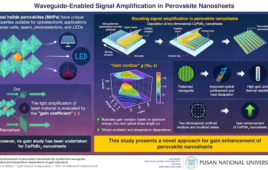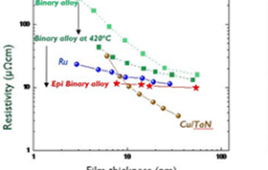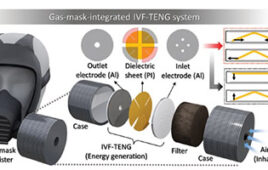Inside a gold nanoparticle. Image: University of California, Los Angeles |
University of California, Los
Angeles (UCLA) researchers are now able to peer deep
within the world’s tiniest structures to create 3D images of individual atoms
and their positions. Their research, published in Nature, presents a new method for directly measuring the atomic
structure of nanomaterials.
“This is the first experiment where we
can directly see local structures in three dimensions at atomic-scale
resolution—that’s never been done before,” said Jianwei (John) Miao, a
professor of physics and astronomy and a researcher with the California
NanoSystems Institute (CNSI) at UCLA.
Miao and his colleagues used a scanning
transmission electron microscope to sweep a narrow beam of high-energy
electrons over a tiny gold particle only 10 nm in diameter (almost 1,000 times
smaller than a red blood cell). The nanoparticle contained tens of thousands of
individual gold atoms, each about a million times smaller than the width of a
human hair. These atoms interact with the electrons passing through the sample,
casting shadows that hold information about the nanoparticle’s interior
structure onto a detector below the microscope.
Miao’s team discovered that by taking
measurements at 69 different angles, they could combine the data gleaned from each
individual shadow into a 3D reconstruction of the interior of the nanoparticle.
Using this method, which is known as electron tomography, Miao’s team was able
to directly see individual atoms and how they were positioned inside the
specific gold nanoparticle.
Presently, X-ray crystallography is the primary
method for visualizing 3D molecular structures at atomic resolutions. However,
this method involves measuring many nearly identical samples and averaging the
results. X-ray crystallography typically takes an average across trillions of
molecules, which causes some information to get lost in the process, Miao
said.
“It is like averaging together everyone
on Earth to get an idea of what a human being looks like—you completely miss
the unique characteristics of each individual,” he said.
X-ray crystallography is a powerful
technique for revealing the structure of perfect crystals, which are materials
with an unbroken honeycomb of perfectly spaced atoms lined up as neatly as
books on a shelf. Yet most structures existing in nature are non-crystalline,
with structures far less ordered than their crystalline counterparts—picture a
rock concert mosh pit rather than soldiers on parade.
“Our current technology is mainly based
on crystal structures because we have ways to analyze them,” Miao said.
“But for non-crystalline structures, no direct experiments have seen
atomic structures in three dimensions before.”
Probing non-crystalline materials is
important because even small variations in structure can greatly alter the
electronic properties of a material, Miao noted. The ability to closely examine
the inside of a semiconductor, for example, might reveal hidden internal flaws
that could affect its performance.
“The 3D atomic resolution of
non-crystalline structures remains a major unresolved problem in the physical
sciences,” he said.
Miao and his colleagues haven’t quite
cracked the non-crystalline conundrum, but they have shown they can image a
structure that isn’t perfectly crystalline at a resolution of 2.4 angstroms
(the average size of a gold atom is 2.8 angstroms). The gold nanoparticle they
measured for their paper turned out to be composed of several different crystal
grains, each forming a puzzle piece with atoms aligned in subtly different
patterns. A nanostructure with hidden crystalline segments and boundaries
inside will behave differently from one made of a single continuous crystal—but
other techniques would have been unable to visualize them in three dimensions,
Miao said.
Miao’s team also found that the small golden
blob they studied was in fact shaped like a multifaceted gem, though slightly
squashed on one side from resting on a flat stage inside the gigantic
microscope—another small detail that might have been averaged away when using
more traditional methods.
This project was inspired by Miao’s earlier
research, which involved finding ways to minimize the radiation dose administered
to patients during CT scans. During a scan, patients must be X-rayed at a
variety of angles, and those measurements are combined to give doctors a
picture of what’s inside the body. Miao found a mathematically more efficient
way to obtain similar high-resolution images while taking scans at fewer
angles. He later realized that this discovery could benefit scientists probing
the insides of nanostructures, not just doctors on the lookout for tumors or
fractures.
Nanostructures, like patients, can be
damaged if too many scans are administered. A constant bombardment of
high-energy electrons can cause the atoms in nanoparticles to be rearranged and
the particle itself to change shape. By bringing his medical discovery to his
work in materials science and nanoscience, Miao was able to invent a new way to
peer inside the field’s tiniest structures.
The discovery made by Miao’s team may lead
to improvements in resolution and image quality for tomography research across
many fields, including the study of biological samples.
This research was conducted at CNSI’s Electron Imaging Center
for NanoMachines and funded by UC Discovery/Tomosoft Technologies. Tomosoft
Technologies is a start-up company based on Miao’s work.





